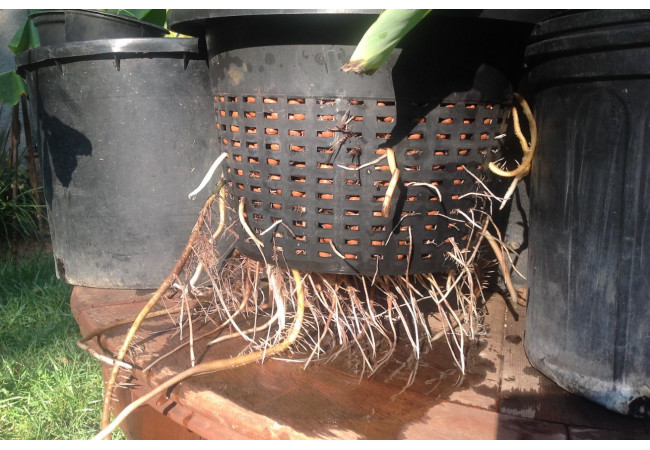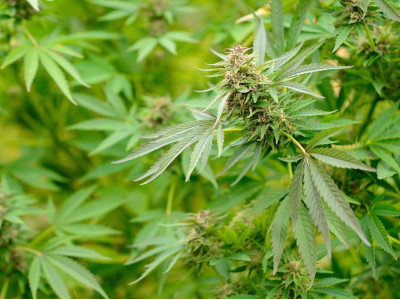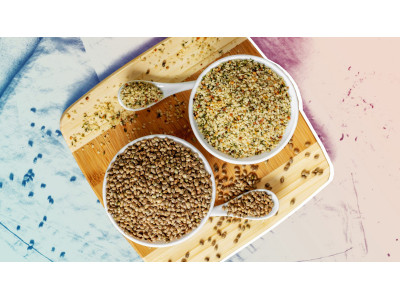
Hydroponics is an innovative method of growing plants without soil that is becoming increasingly popular among gardeners and farmers. This method offers a convenient way to provide plants with everything they need to grow and develop. A key aspect of marijuana hydroponics is fertilizer, which provides the plants with the nutrients they need. In this article, we'll take a look at different types of hydroponic fertilizers, explore the possibility of making your own fertilizer, and show you how to fertilize hydroponic plants.
Why use hydroponic fertilizers?
Hydroponics offers a unique approach to growing plants, and nutrients play a key role in this process. The main benefits of using special fertilizers for hydroponics are:
- Precise Nutrient Control: In hydroponics, you can precisely control the amount and type of nutrients your plants receive, allowing them to grow in optimal conditions.
- Soulless Growing: Hydroponics does not require the use of soil, which prevents soil diseases and simplifies the process of plant care.
- Efficient use of water: Hydroponics uses water more efficiently because plants get exactly the amount of moisture they require.
- Increased Yields: By optimizing plant growth conditions, hydroponics produces higher yields than traditional growing methods.
Types of fertilizers for hydroponics
- Mineral fertilizers
Mineral fertilizers for marijuana and other plants form the basis for most hydroponic systems. They contain key macro and micronutrients that plants require for healthy growth. The composition of such fertilizers includes nitrogen, phosphorus, potassium, magnesium, calcium, and other important elements.
- Organic fertilizers
Organic fertilizers in hydroponics are biodegradable substances such as compost, organic extracts, manure, etc. They allow you to create a more sustainable and environmentally friendly system for growing plants.
- Synthetic fertilizers
Synthetic fertilizers are specially designed for hydroponic growing of plants. They provide precise control over nutrient content and are often used in commercial hydroponic systems.
- Combined fertilizers
Combination fertilizers combine the benefits of mineral and organic fertilizers to provide optimal nutrition for hydroponic plants.
How to fertilize hydroponics?
- Correct proportions
Fertilizers should be carefully measured and mixed according to the manufacturer's instructions to avoid oversupply or undernutrition.
- Monitor pH
Remember that the pH of the solution affects the availability of nutrients. Control the pH level to ensure optimal plant nutrition.
- Focus on plant growth
Track the growth and general health of your plants. This will help determine if additional fertilizer or dosage adjustments are needed.
- Regular mortar changes
Regularly change the nutrient solution in your hydroponic system to provide your plants with fresh nutrients.
Types of own fertilizers for hydroponics
You can create your own hydroponic fertilizer for marijuana or any other plant using available materials. Here are some ideas:
- Tea compost
Use used tea leaves and other organic waste to create compost rich in microorganisms and nutrients. This is a great way to enrich your hydroponic system.
- Banana fermented solution
Bananas are rich in potassium, which is good for plant growth. Try mixing ripe bananas with water and let this solution ferment for a few days. Use the resulting solution as fertilizer for hydroponic plants.
- Egg and Bone Meal
Get eggshells and bone meal from food scraps. After grinding them into a powder, add to the solution in your hydroponics system to provide the plants with calcium and phosphorus.
- Magnesium Epsom
Epsom salt contains magnesium, which promotes plant growth. Dissolve Epsom in water and apply in a hydroponics system.
- Banana Peel Powder
Dry banana peel, grind it into a powder and use it as a source of potassium and phosphorus for plants.
How to make fertilizer for hydroponics with your own hands?
Step 1
Choose your nutrient sources. Use available organic waste such as leftover fruit vegetables, coffee grounds, eggshells, etc. You can also use mineral ingredients such as Epsom salt or other mineral supplements.
Step 2
Prepare the fertilizer. For organic fertilizers, mix selected waste and leave it for composting. For mineral fertilizers, properly measure and mix mineral additives with water.
Step 3
Apply fertilizer to the hydroponic system. Follow instructions for applying fertilizer. Typically, fertilizer is added to a nutrient solution that is then fed to the roots of plants.
Buying ready-made fertilizers for hydroponics
If you don't want to make your own marijuana fertilizers, you can always buy hydroponic fertilizers from various manufacturers in various variations. When buying fertilizers, pay attention to the composition, recommendations for use, as well as the reputation of the manufacturer.
Indoor hydroponic cultivation
Marijuana seeds for hydroponics can be found in the smartshop-smartshop online store. Hydroponic systems are pumped into growing channels from a holding tank filled with synthetic nutrients. While others use an external tank filled with fish (to produce the nitrogen the plants need to grow). Other forms of hydroponic systems do away with water currents entirely and use fogging systems that fill the air with moisture.Despite their distinct differences, all of these systems benefit from the sustainable use of nutrients and water that nourish the roots of plants. It may come as a surprise, but this approach uses about 10 times less water than growing in soil. Most of these systems use similar hardware. These parts of the kit include:
- A reservoir of nutrients. In this external block, cannabis fertilizers, which are necessary for prosperity at different stages of cultivation;
- Plant Trays/Channels: This structure holds the cannabis plants and provides a passage through which the nutrient solution circulates. They vary in shape and size, from narrow and long channels to wide flumes with a much larger surface area;
- An air stone is a device that sits in a nutrient reservoir and pumps oxygen into a mixture that the roots need to breathe;
- The pump is a kit that circulates the nutrient solution from a reservoir into a channel or tray;
- Mesh Pots: These components hold cannabis plants in place, allowing their roots to grow down.
Every experienced grower knows how to care for hemp. Marijuana hydroponics has several advantages that make it more suitable than growing in soil.
Main benefits:
- Higher yields.
Easy access to nutrients, reduced pest pressure and absence of soil pathogens make the growing process fast and linear;
- Harvest faster
Instead of sending roots into the soil in search of nutrients and establishing relationships with microbes to access certain minerals, cannabis plants in systems get everything they need, constantly delivered to their roots, resulting in faster growth. However, when it comes to photoperiod strains. The light cycle also has a strong influence on plant maturation time;
- Increased oxygenation
Cannabis roots require oxygen to breathe and facilitate physiological processes. When reserves are depleted, the roots become predisposed to pathogens. Hydroponics hydrates the roots with a high dissolved oxygen nutrient solution, helping them stay healthy;
- Reduced water consumption
Contrary to what you might think, hydroponics uses much less water than soil systems.
Disadvantages of hydroponicsDespite using less water, hydroponic systems require electricity to operate pumps and air stones. Internal systems also need powerful lighting;
- Prone to failure
It's possible to automate hydroponic systems to run on their own, but things can go wrong. Power outages, faulty pumps, and faulty air stones will leave your system in urgent need of human intervention;
- Noise
Who doesn't love the sound of running water? This is more of a minus for some, and a plus for others.
Conclusions
Hydroponics offers unique possibilities for growing plants without soil. However, successful cultivation depends on the right approach to fertilizers. You can use different types of fertilizers: mineral, organic, synthetic and combined. Making your own fertilizer is a great option for those who are looking for a sustainable and environmentally friendly approach, or who have not yet chosen their trusted manufacturer. Don't forget to monitor pH-level and the condition of your plants to ensure they are optimally nourished and thrive in your hydroponic system.
* We remind you that sowing cannabis seeds in Ukraine is prohibited, use your knowledge for legal purposes in the country where you are. The material is scientifically fact-finding.




